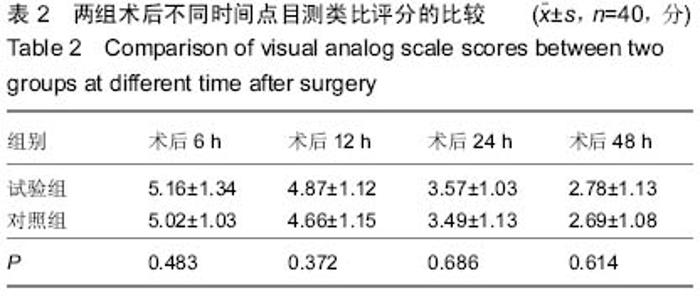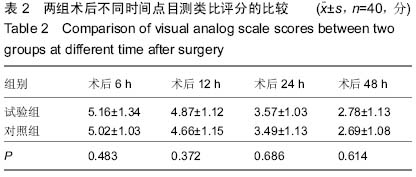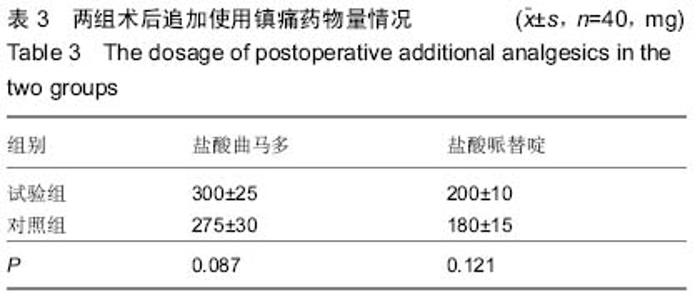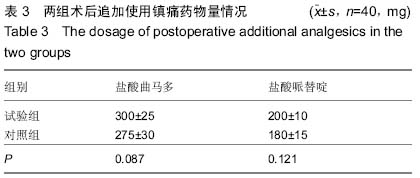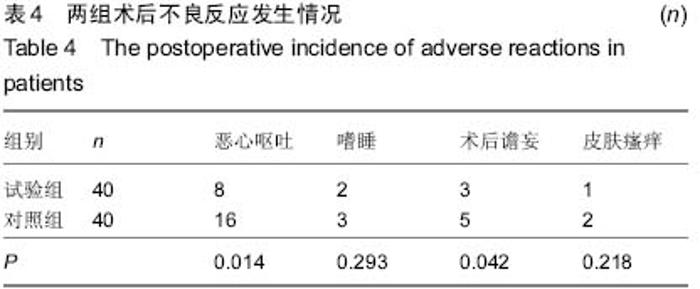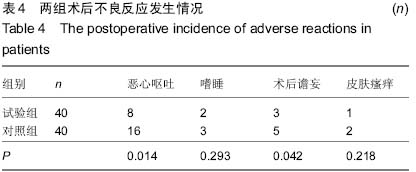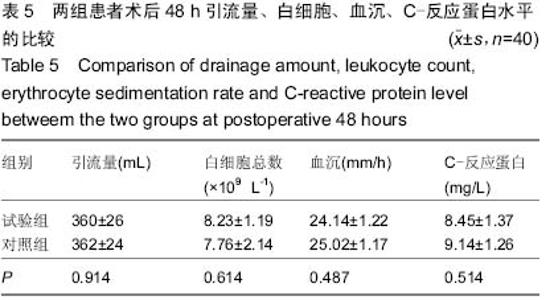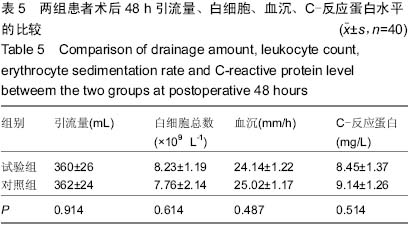| [1] 江铭,朱文雄,吴海谊,等.PLIF手术治疗退行性腰椎管狭窄症伴腰椎失稳的疗效观察[J].右江民族医学院学报,2015,37(1): 68-69,72.
[2] 菅振,傅一山.微创新理念新途径—腰椎传统手术微创化[J].中国矫形外科杂志,2015,31(5): 402-406.
[3] 梁亮,甫拉提•买买提,张健,等.后路单侧和双侧内固定治疗腰椎间盘突出症临床疗效[J].中华实用诊断与治疗杂志,2015,29(2): 148-151.
[4] 李明明,侯岩珂,王禹增.两种椎间融合手术对腰椎退变性疾病术后神经功能恢复的影响[J]. 中国实用神经疾病杂志,2015,18(3): 24-25.
[5] 黄帅豪,郑秋坚,王义生,等.非甾体类抗炎镇痛药在腰椎后路内固定术后镇痛效果的比较[J]. 实用医学杂志,2014,43(20): 3321-3323.
[6] 苏祥正,毛克亚,刘郑生,等.帕瑞昔布钠与氟比洛芬酯在多节段腰椎融合术后的镇痛效果比较[J].解放军医学院学报,2015,33(2): 109-111,139.
[7] 王晓.无痛治疗模式管理脊柱椎体骨折术后疼痛的临床观察[D].山东大学,2014.
[8] 王强,贾瑞芳,孙常太.氟比洛芬酯在老年患者后路腰椎融合手术术后的镇痛效果观察[J].脊柱外科杂志,2014,12(5): 274-278.
[9] 陈爽,苏毅,刘沂.塞来昔布联合帕瑞昔布钠超前镇痛方案对胸腰椎后路手术术后镇痛的效果观察[J].中国脊柱脊髓杂志,2013, 23(1):37-41.
[10] 刘传荣.药用透皮材料的制备与研究[D].上海工程技术大学, 2014.
[11] 许关煜.透皮贴剂及产品漫谈[J].中国处方药,2007,6(5): 42-43.
[12] 包玉胜.透皮给药系统的研究进展[J].山东化工,2014,43(6): 58-61.
[13] 胡榕,张传汉.阿片类药物在慢性非癌性疼痛中的规范化应用[J].中国疼痛医学杂志,2015,21(2):133-137.
[14] 刘涛.不同剂量盐酸丁丙诺啡应用于术后患者硬膜外自控镇痛效果[J].新乡医学院学报, 2014,31(6):464-466.
[15] Plosker GL,Lyseng-Williamson A.Buprenorphine 5, 10 and 20 mug/h transdermal patch: a guide to its use in chronic non-malignant pain.CNS Drugs.2012;26(4):367-373.
[16] 孟海,王宁.舒芬太尼与丁丙诺啡对老年骨科患者术后镇痛效果比较[J].淮海医药, 2014,32(2): 116-117.
[17] 沈龙祥,曾炳芳.药物贴剂治疗骨科疼痛[J].国际骨科学杂志, 2014,34(3):137-139.
[18] Al-Tawil N,Odar-Cederlof I,Berggren AC,et al. Pharmacokinetics of transdermal buprenorphine patch in the elderly.Eur J Clin Pharm.2013;69(2):143-149.
[19] Hamaguchi S,Ikeda T.Buprenorphine transdermal patch (Norspan tape).Masui.2013; 62(7):799-807.
[20] Karlsson J,Soderstrom A,Augustini BG,et al.Is buprenorphine transdermal patch equally safe and effective in younger and elderly patients with osteoarthritis-related pain? Results of an age-group controlled study.Curr Med Res Opin.2014;30(4): 575-587.
[21] Schutter U,Ritzdorf I,Heckes B.The transdermal 7-day buprenorphine patch--an effective and safe treatment option, if tramadol or tilidate/naloxone is insufficient. Results of a non-interventional study.MMW Fortschr Med.2010;152(31-33): 49.
[22] Gordon A,Callaghan D,Spink D,et al.Buprenorphine transdermal system in adults with chronic low back pain: a randomized, double-blind, placebo-controlled crossover study, followed by an open-label extension phase.Clin Ther.2010; 32(5):844-860.
[23] Plosker GL.Buprenorphine 5, 10 and 20 mug/h transdermal patch: a review of its use in the management of chronic non-malignant pain.Drugs.2011;71(18):2491-2509.
[24] Uberall MA,Muller-Schwefe GH.Long-term treatment of chronic pain with low-dose 7-day buprenorphine transdermal patch. Observational data from elderly patients of pain relief and quality of life.MMW Fortschr Med.2013;155 Suppl 3: 87-96.
[25] Pergolizzi JV Jr,Ben-Joseph R,Chang CL,et al.US practitioner prescribing practices and patient characteristics of those newly treated with a buprenorphine transdermal patch system. Curr Med Res Opin.2014;30(8): 1579-1587.
[26] 陆长旺.丁丙诺啡贴剂治疗膝骨性关节炎骨痛的疗效观察[J].中国老年保健医学,2014,12(3): 44.
[27] Miller K,Yarlas A,Wen W,et al.Buprenorphine transdermal system and quality of life in opioid-experienced patients with chronic low back pain.Expert Opin Pharmacother. 2013;14(3):269-277.
[28] Hu ZJ,Fang XQ,Zhou ZJ,et al.Effect and possible mechanism of muscle-splitting approach on multifidus muscle injury and atrophy after posterior lumbar spine surgery. J Bone Joint Surg Am.2013;95(24):e192(1-9).
[29] Wu MH,Wong CH,Niu CC,et al.A comparison of three types of postoperative pain control after posterior lumbar spinal surgery.Spine.2011;36(25):2224-2231.
[30] 宋进良,黄明辉,赵爱玲,等.腰椎后路手术围手术期多模式镇痛的临床评价[J].中国医学创新,2014,7(29):50-52.
[31] 赵智慧,铁木尔.地佐辛在腰椎内固定术后患者自控静脉镇痛中的应用[J].临床和实验医学杂志,2013,12(24):1989-1992.
[32] 翁玉英,梁彩明.骨科术后使用镇痛泵患者出现不良反应及其处理[J].当代医学,2013,19(13): 120-121.
[33] 中华医学会骨科学分会.骨科常见疼痛的处理专家建议(摘录)[J].中国社区医师,2012,28(21):13.
[34] 顾美珍,艾红珍,姜习凤.多模式镇痛在骨科术后管理中的作用[J].苏州大学学报:医学版, 2011,31(1):136-137+149.
[35] 杨金星,杨欣建,李旭春,等.超前镇痛在骨科术后疼痛治疗中的应用[J].国际骨科学杂志, 2011,32(3):199-201.
[36] Miller K,Yarlas A,Wen W,et al.The impact of buprenorphine transdermal delivery system on activities of daily living among patients with chronic low back pain: an application of the international classification of functioning, disability and health. Clin J Pain.2014;30(12):1015-1022. |


